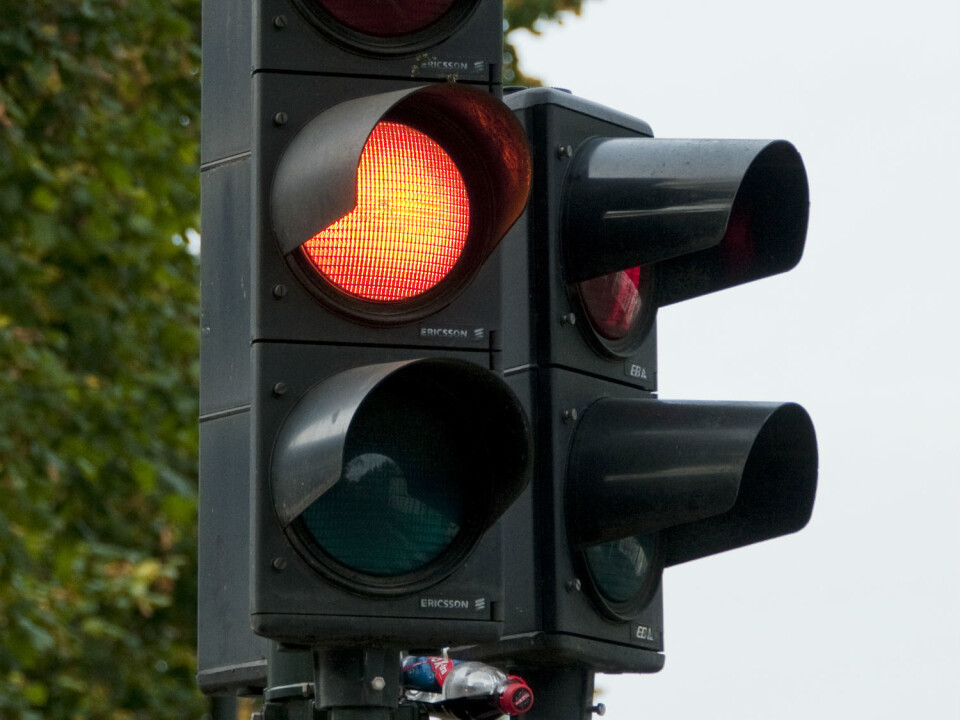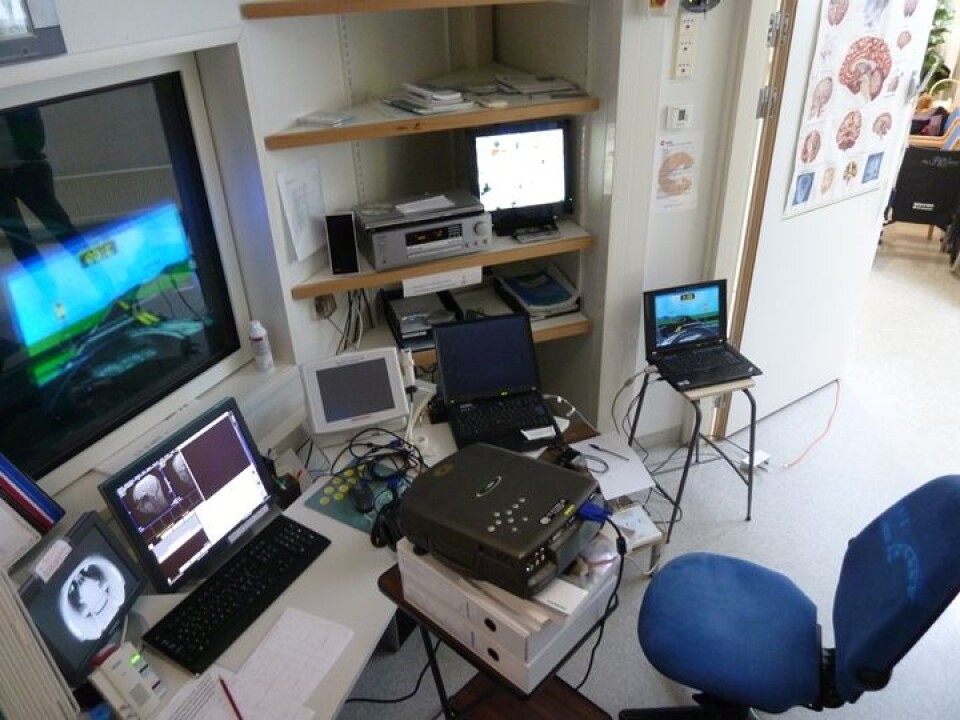An article from Norwegian SciTech News at SINTEF
Risky young drivers are highly emotional
When the emotional centre in a young person's brain overrides the part that's responsible for rational decisions – you‘ve got yourself a risky driver.
Denne artikkelen er over ti år gammel og kan inneholde utdatert informasjon.
Last autumn, in a laboratory at the University of Turku in Finland, thirty-four young people allowed their brains to be scanned while playing a car race video game.
How did the activity in their brains differ while being met with a yellow traffic light in a junction?
Finding explanations
Dagfinn Moe at SINTEF (a Norwegian independent research organisation) has been studying young motorists for many years, trying to find explanations for young people's risk behaviour – a field that encompasses many scientific disciplines including psychology, neurobiology and sociocultural factors.
Meanwhile, in Finland, Sami Mynttinen at the Finnish Transport Safety Agency TraFi has been interested in studying the brains of young people in the light of recent knowledge.

Just like his Norwegian colleague, he wanted to study how young motorists dealt with a particular driving issue, the approach they selected, and the nature of their brain activity.
Young people over-represented
Figures show that young people are over-represented in traffic accidents, and that young men in the age range 18 to 24 are at the highest risk.
When the researchers came to selecting their test subjects, it was therefore important to include young people who exhibited different levels of risk-taking behaviour.
After a series of psychological tests and behavioural investigations, they selected 17 risk-willing and 17 risk-averse young people.
Frontal lobe and limbic system

The mechanism that controls the basis of our decision-making lies in the part of the brain called the frontal lobe. In this part, we gather information from our surroundings on which we base our decisions.
In the centre of our brains, we have the limbic system – the brain's emotional centre.
“Two-way communication is carried out between this and the frontal lobe", says Moe.
"All our lives we have to make decisions, and emotions of all kinds are always linked to this process. In many cases our emotions will take the upper hand, causing us to take risks and act rashly and foolishly", he says.
The video game
In the video game, the speeds were fixed so that the subjects only had the use of a start and stop button.
The drivers had to go through twenty junctions, and every time they got the yellow light. Hence, they had to make a choice on whether to do the safe thing: stop and wait for the green light, or to drive on – even if that meant they could collide with another car.
On average, it took It took about 5 minutes to drive along the section of road.
If he stopped to wait for the green light, it would delay him by three seconds. If caused a collision, he had to wait twice as long, for six seconds, before he could drive on.
A scanner recorded the activity in their brains throughout.
Dopamine secretion
High-risk takers drive through yellow lights more often than risk-aversive do.
Moe shows a series of images from brain scans of the young people. He points to a couple of images where two yellow squares stand out in the centre of the brain. These are images taken from men in the high-risk group.
"The high-risk group is dominated by motivation and emotions encouraging them to take a chance and drive on regardless,” Moe explains.
"Reward experience and dopamine secretion are strong among these subjects, which means that high-risk takers choose to run a yellow light more often than risk-averse subjects", says Moe.
He believes the drivers in the high-risk group experience no dilemma, since they possess a drive to obtain a reward and expect that things will turn out alright if they run a yellow light.
The risk-averse drivers consider and balance their assessments to a much greater degree before they decide whether to stop or to drive on.
White matter
The researchers also studied the brain's white matter. This area is a neural network consisting of bundles of nerve fibers that promote rapid and stable communication between the different areas of the brain.
"We have long believed that the neural network in the brains of young people has not completed its development, and that this is the reason behind a lack of holistic thinking combined with a willingness to take risks", says Moe.
"However, we found that this network was actually better developed and more mature among high-risk takers than the risk averse", he says.
He concedes that this may seem paradoxical, but points out that risk-willingness is often linked to high levels of activity during which we challenge both our physical and mental capabilities.
"This in turn stimulates learning and coping behaviours and an increase in the numbers of neural connections in the brain.”
“However, it doesn't prevent the motivation to make risky decisions and act on them", says Moe.
Next step
The researchers now want to examine educational approaches towards influencing the behaviour of high-risk takers. They believe that such approaches will not alter these subjects’ inherent nature, but will help them acquire a better balance between reward drive and the consequences of their actions.
"It's all about developing an ability to self regulate by getting young people to understand what taking risks really means", says Moe.
-------------
Read the Norwegian version of this article at forskning.no

































